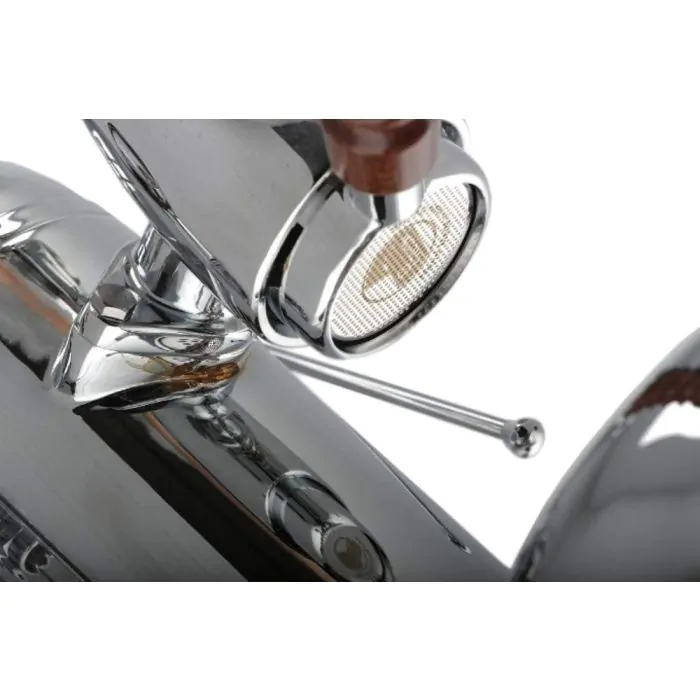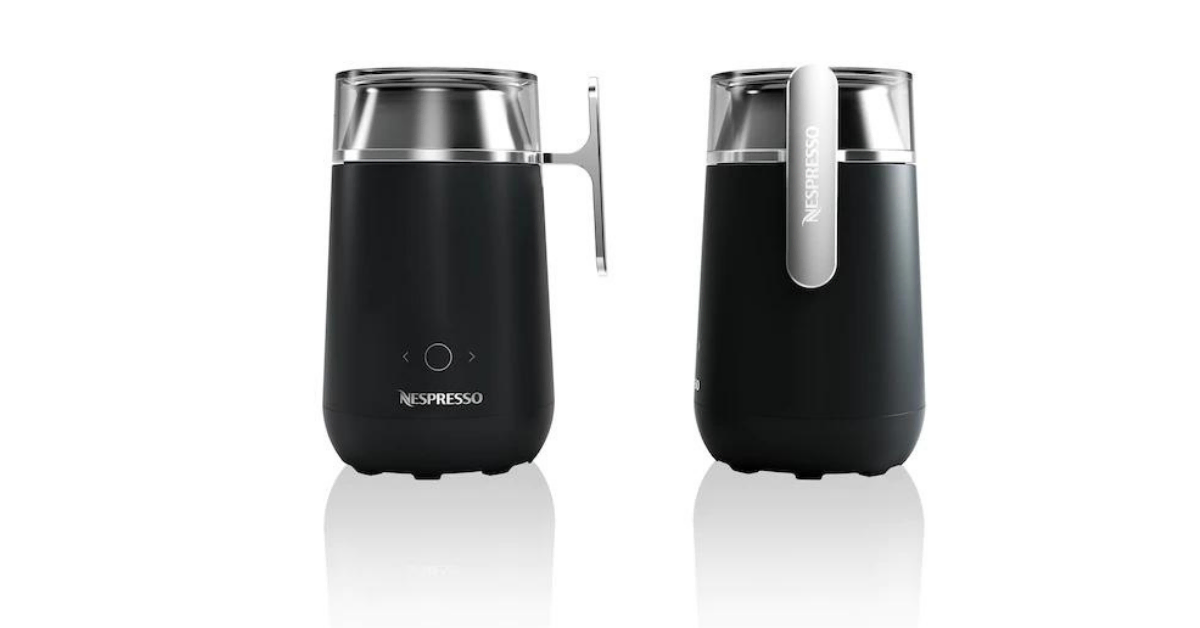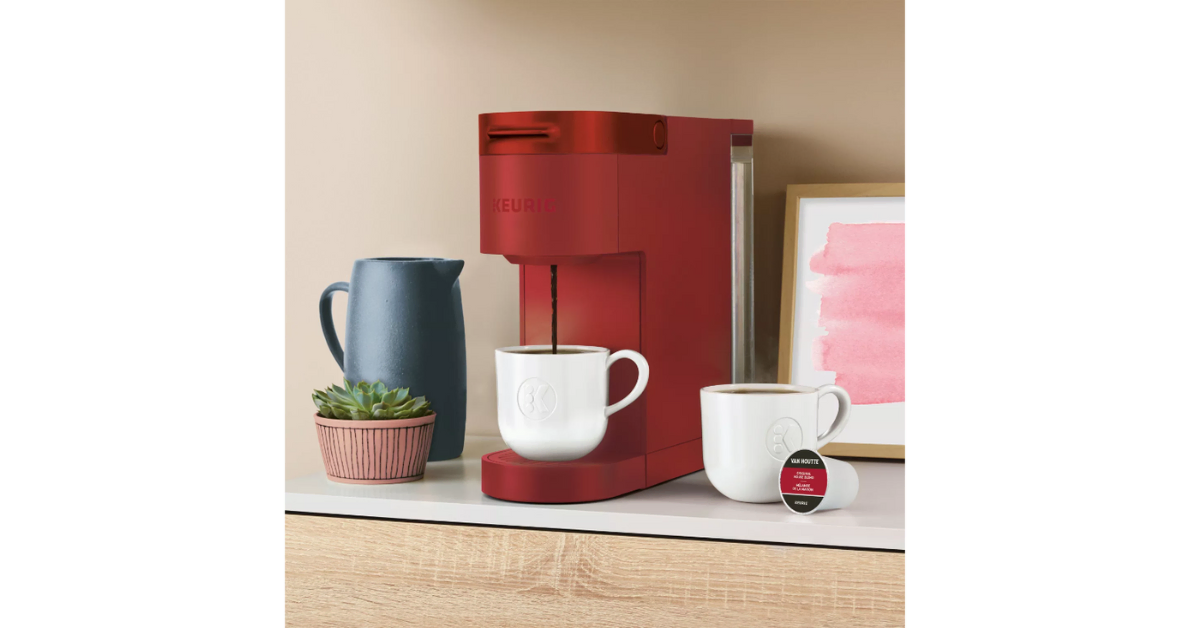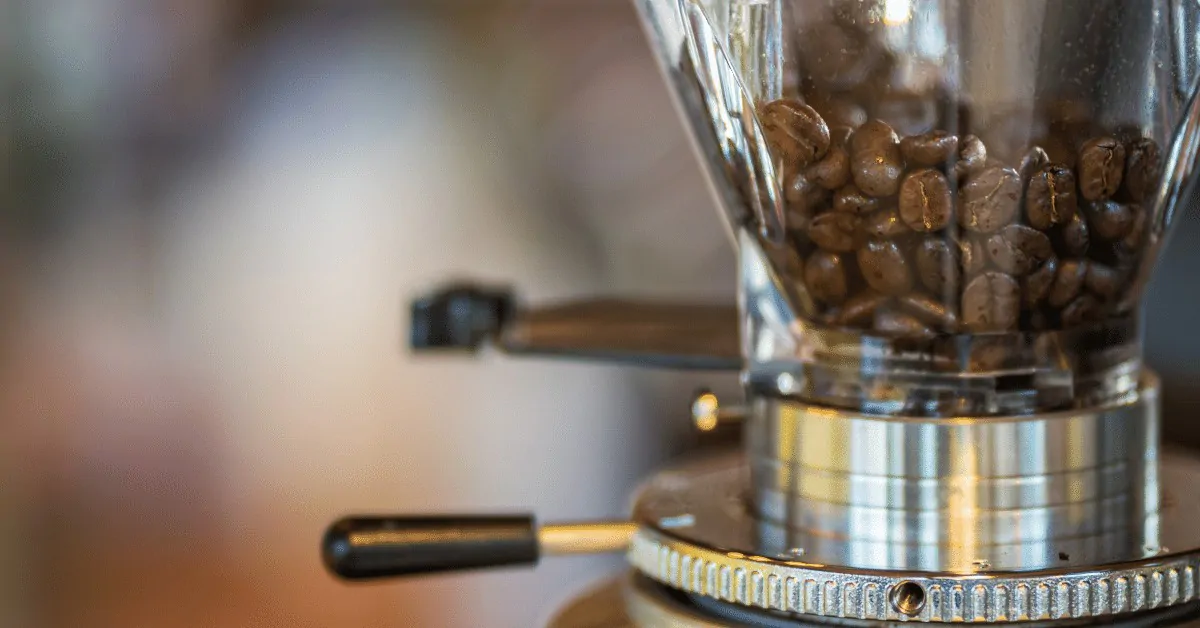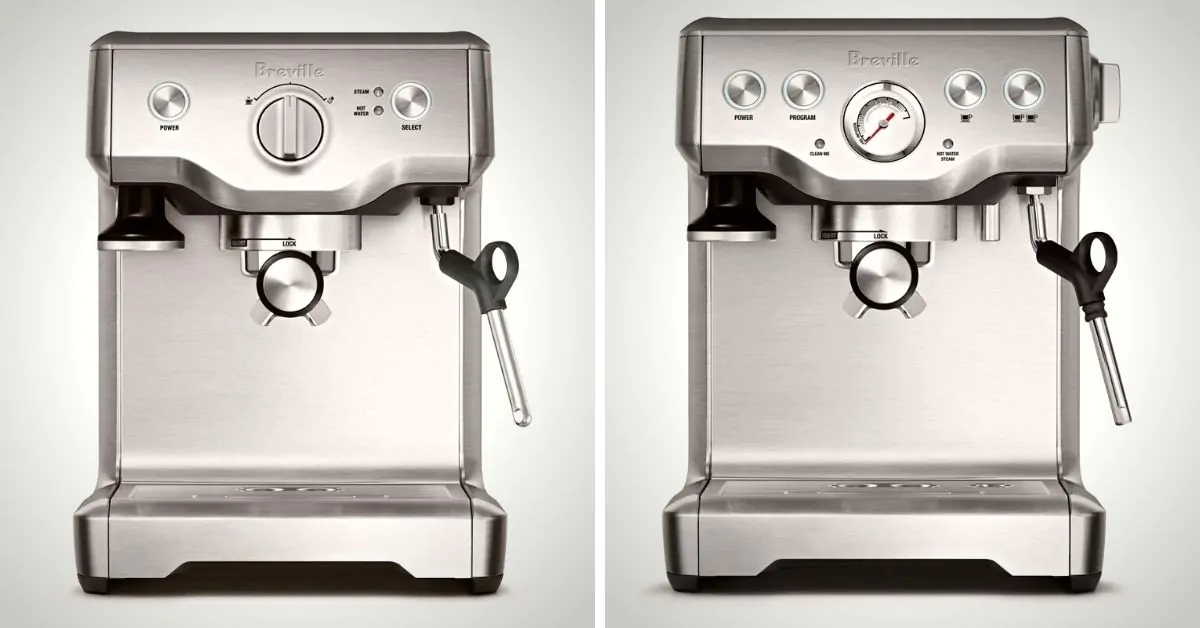Short on time? Our top pick for the best manual espresso machine is the ROK Presso Manual Espresso Maker.
Buying your first manual machine?
Welcome to the world of true espresso artists.
Now I’m sure you’re overwhelmed by tons of weirdly-designed manual machines on the market. I definitely was.
That’s why I’ve done in-depth research on all the features to look for in a manual espresso maker, as well as which models on the market have them all.
In this article, I’ll show you what’s the best manual espresso machine out there, as well as its close runner-ups.
So keep reading to find out more!
Best Manual Espresso Machine – Our Top 5 Picks
- ROK Presso Manual Espresso Maker (Best Overall)
- Flair Espresso Maker (Best Value)
- Elektra S1 Micro Casa (Best Design)
- La Pavoni EPC-8 Europiccola Espresso Machine (Most Control Over Brewing Process)
- La Pavoni PC-16 Professional Espresso Machine (Best For Large Households)
ROK Presso Manual Espresso Maker
This model by ROK definitely deserves the first spot on this list. It’s affordable, simple to use, portable and easy to clean. If you ask me, those are the four most important features of a manual espresso maker.
First, let’s talk about design. This machine is pretty straightforward, you won’t even look at the manual. Coffee goes into the portafilter, while the pressure chamber is where you pour hot water.
Then, it’s time for a quick and simple workout. You just need to push the two levers down to create the pressure required for espresso making. This machine takes less than 30 seconds to make a cup.
What I especially love about this espresso maker is that’s perfect for traveling. It requires no electrical outlet, plus it’s compact and lightweight. No need to resort to Starbucks when you can make your own coffee wherever you want.
Pros
- Compared to most manual espresso makers on the market, this one won’t break your bank as much
- Rubber legs keep the espresso maker in place while you’re applying pressure, avoiding possible spillage
- The lightweight and compact design make this espresso maker suitable for travels
- All the parts are easy to disassemble and clean
Cons
- You need to preheat the portafilter to reach the temperature required for coffee extraction
Flair Espresso Maker
Imagine being able to enjoy your coffee even when you’re on the road or camping. Well, that’s exactly what I love about Flair espresso maker.
This machine requires no power, only your hands. Add water and coffee to their designated places, and just pull the piston to extract a cup of espresso.
The piston can achieve between 8 and 16 bars of pressure, so you get to play around with levels of coffee extraction. The product also comes with a custom pressure gauge, which allows you to be really precise.
This espresso maker should be cleaned after each use. That also includes disassembling each part and rinsing them in the sink. Now, this might sound like a lot of work, but it actually won’t take more than a few minutes.
Pros
- Being one of the most affordable manual espresso makers on the market, this model is gentle on your wallet
- Made of aluminum and stainless steel, this model will last you a long time
- The pressure gauge lets you monitor applied pressure, so that you can modify the final result
- Comes with a 3-year warranty, so you don’t have to worry about getting a malfunctioning product
Cons
- The cylinder gets hot, which means you need to wait for it to cool down before cleaning
Elektra S1 Micro Casa
Manual espresso makers really blow my mind when it comes to appearance, and this retro model by Elektra is definitely something else. But I guess it all makes sense once you find out that this machine was invented back in the 1940s, and hasn’t changed since.
Not going to lie, this espresso maker is heavy and certainly not compact. After all, it comes with a large boiler, something you don’t often see with manual machines.
With a boiler capacity of 61 ounces, this machine does take a bit longer to heat up when started. But after that, you can make several cups of coffee, one after another. If we do the math, that’s between 20 and 30 espresso cups!
There’s not a lot of guessing game here. The sight glass shows you the water level, while the pressure gauge will tell you once it’s ready for extracting espresso. You just need to pull the lever down.
I love that this machine has different safety features. First, there’s a safety switch on the bottom that stops overheating. Then, there’s the overpressure valve that prevents exploding from too much pressure.
Finally, the cord has a grounded plug against shock risks. With these safety measures, there’s practically no way this machine can break down.
Pros
- Comes with a steam wand for making milk-based drinks, which can be removed for easy cleaning
- The pressure gauge indicates when it reaches proper pressure for making espresso, so you can get a well-extracted cup every time
- A large boiler allows you to make more than one cup of coffee at a time
- Comes with several safety features that prevent damage caused by malfunctioning
Cons
- It takes a while to reach the desired temperature, so it’s not one of the fastest models available
La Pavoni EPC-8 Europiccola Espresso Machine
This compact little machine is great for small kitchen spaces and RVs. And while it’s tiny, this model has a decently sized 20-ounce water tank. Not only you can make 8 cups of espresso without refilling, but you can also make two cups at a time.
Now I’m not saying a 20-ounce capacity boiler is huge, but that’s more than enough for a household of two espresso lovers.
The boiler takes no more than 6 minutes to heat up. Once it reaches the right pressure, the machine will give you a light signal. Then, you just need to pull the level down to get your cup of coffee. There’s also an automatic frother, so you can enjoy your milk-based drinks.
This model features a safety valve and a boiler fuse that prevent accidents from too much heat or pressure. It’s not that likely these things will ever happen, but it’s good to know your machine is ready for them.
Pros
- An automatic milk frother allows you to enjoy your favorite milk-based coffee drinks
- A 20-ounce boiler allows you to make 8 cups of espresso without refilling
- The compact size makes this machine great for small kitchen spaces
- Comes with a steam wand and a cappuccino attachment, so you can make milk-based espresso drinks
Cons
- Takes a while to heat up to the proper temperature
La Pavoni PC-16 Professional Espresso Machine
With a boiler capacity of 38 ounces, this espresso maker can make up to 16 shots before refilling. This makes the machine great for households with more than one espresso lover.
For making perfect foam, you get not one but two attachments!
The first one is a classic steam wand, which gives you consistent foam each time.
The other one is a “cappuccino attachment,” and it allows you to make large foam and latte art. So depending on the drink, you can really play around and make different foam each time.
This espresso machine has a quite sturdy body, and will last you for decades to come. It’s all metal – except for the handles, which are made of wood.
Of course, this also means you have to clean it regularly. Luckily, all parts are easy to disassemble and can be washed with a vinegar solution.
Pros
- A large boiler allows you to make many shots without refilling
- With two different frothing attachments, you can make the foam exactly how you like it
- Two spouts allow you to make two cups of espresso at the same time
- Metal construction means the machine is sturdy and durable
Cons
- It’s a bit slow on heating water, so you have to start the machine to warm up beforehand
Manual Espresso Makers – What You Need To Know
Manual espresso machines aren’t as intuitive to use as their automatic counterparts.
So if you’ve never used one before, it’s hard to know what you’re looking for.
In this section, I’ll go over some of the most important features of manual machines.
Type Of Lever
Manual espresso makers come with one of the two possible lever options: spring and direct.
The spring lever is a bit easier to use, as it doesn’t require that much work from you. You just need to press it down, but the spring is in charge of creating the required pressure to extract the grounds.
A spring lever gives you consistent results, which is great for beginners. But, it doesn’t allow much room to play around with the final result.
A direct lever, on the other hand, is more difficult to use. You need to apply direct pressure to extract your coffee. This means you have ultimate control of how your coffee turns out, which is the dream come true of every barista.
That also means there’s a learning curve. It will take a while to master the art of making the perfect cup of espresso. But if practicing your barista skills is what you want to do, you’ll love the power the direct lever gives you over the final results.
Electric Plug
When it comes to manual espresso makers, what electricity does is helps you heat up water for brewing. With non-electric models, you need to heat water using a kettle, pot or anything similar.
Neither of these options is better than the other. Electric machines are usually a bit bulkier and more expensive. But they can also feature a steam wand, something non-electric espresso makers don’t have.
Tank Capacity
If you have a household full of espresso lovers, this is definitely an important factor.
You should keep in mind that most manual machines hold enough water for a single shot. This means you’ll have to add water for each cup you’re making.
Of course, there are some electric models that do have a water tank large enough for 8+ cups, so you don’t have to refill all the time. But keep in mind that in most cases, these machines take a while to heat up.
Material
Nowadays, you can find manual espresso machines made of anything from plastic to cast iron. And while the choice of material determines the price, it also determines the longevity of the machine.
In terms of quality, brass and steel are the best options out there, followed by aluminum. When it comes to plastic parts, look for BPA-safe labels to ensure it’s safe.
Maintenance
Manual espresso makers don’t have autocleaning modes and indicator lights to remind you it’s descaling time. It’s up to you to keep up with the cleaning schedule.
To make your job a bit easier, make sure the model you pick is easy to disassemble and clean.
If the parts are dishwasher-safe, even better. This excludes cast iron and aluminum parts, as the dishwasher can be damaging to the coating.
FAQ
Manual espresso makers can be quite confusing to a beginner.
In this section, I’ll answer some of the most common questions people have about these machines.
What Is A Manual Espresso Machine?
A manual espresso machine requires you to be engaged in every step of the brewing process. You need to heat up water, tamper the grounds and pull the shot applying your own pressure.
This type of machine gives you complete control over everything. This includes coffee grind, temperature, pressure and the duration of extraction. As the name suggests, you’re doing everything manually. But as a result, you can tweak your drink precisely how you want it.
What Is The Difference Between An Automatic And Manual Espresso Machine?
An automatic espresso machine usually features knobs or buttons that let you adjust your brew. Then, it does all the hard work for you. All automatic machines pull the shot for you, but some go even further to grind and tamper the grounds as well.
With manual machines, you’re the one doing the hard work. Not only do you grind and tamper the coffee grounds, but you also apply the pressure required to pull a shot of espresso.
Are Manual Coffee Machines Better?
Neither type of coffee machine is better. It all comes down to how engaged you want to be in the brewing process. And of course, there’s also a semi-automatic machine that’s the middle ground between the two.
To Sum Things Up
A manual espresso maker is a tool every espresso geek needs. And while every model on this list is a good example of a high-quality manual machine, the one that stands out is the ROK Presso.
It’s a high-quality, affordable product that lets you have full control over the brewing process. As an aspiring barista, you can really play around with your espresso with this machine.
Pulling a shot is as easy as pressing down both levers with your hands, no manual is needed. And best of all – you can do it anywhere. Be it on a road trip or camping, you don’t need a power supply to make coffee with this espresso maker.

